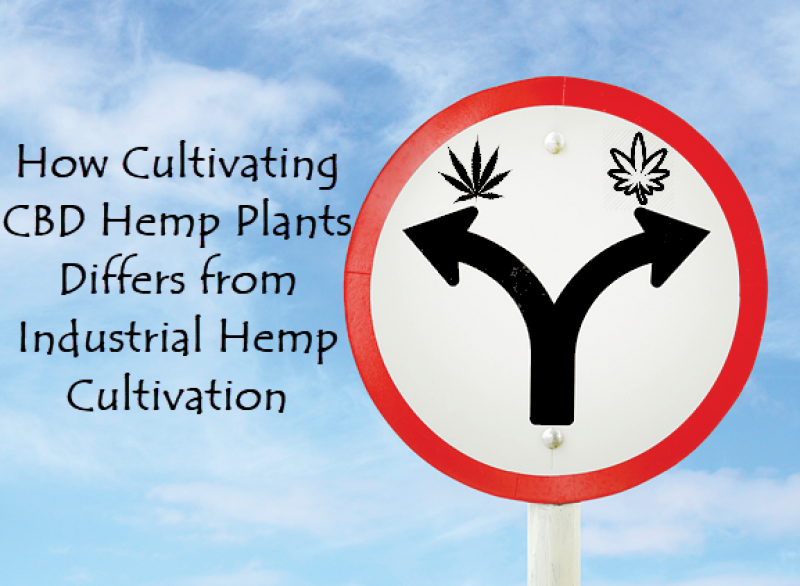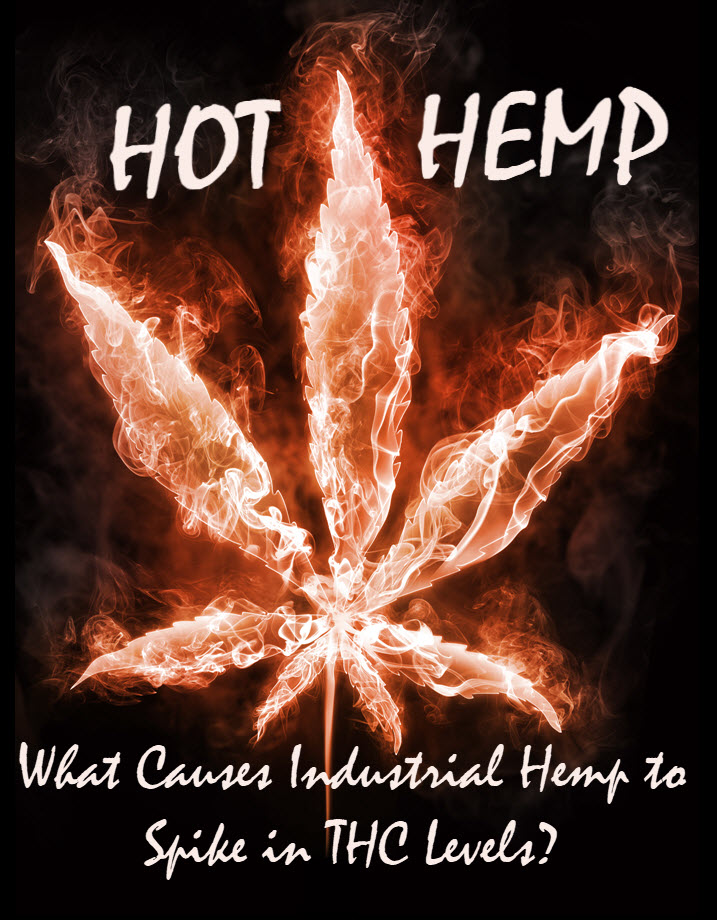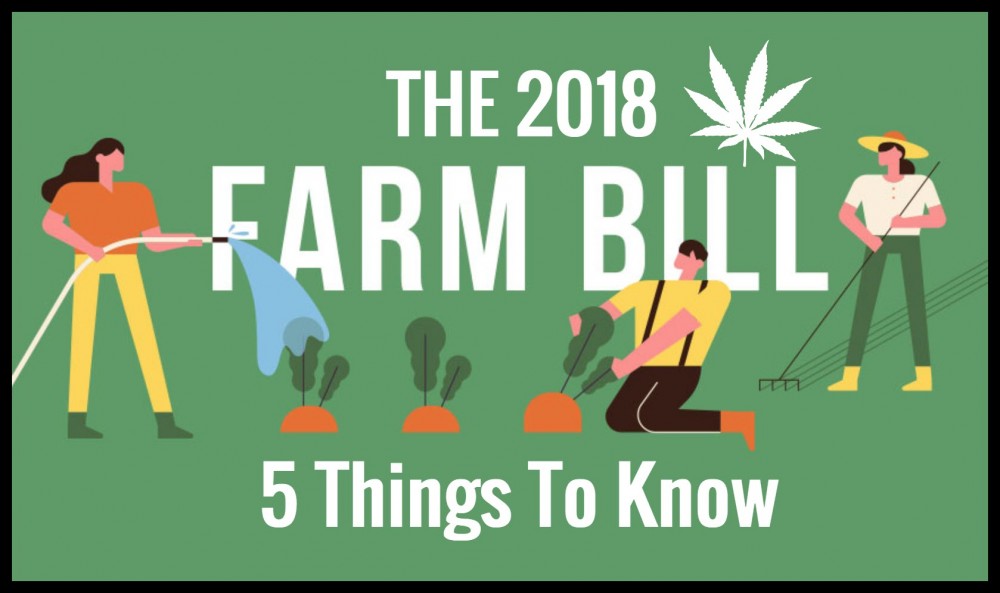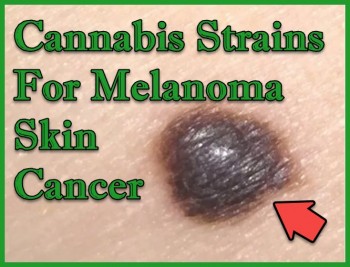How Cultivating CBD Hemp Differs from Industrial Hemp Plants
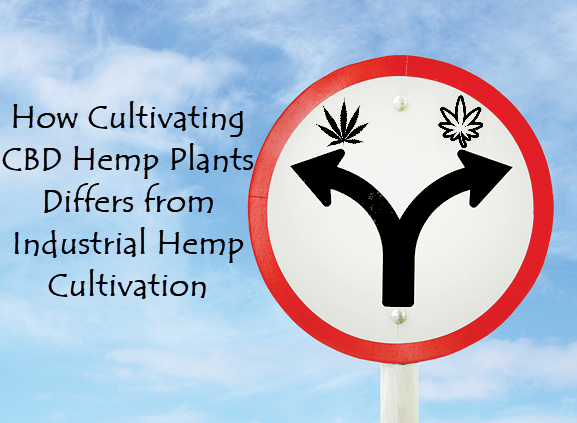
There is a lot of misinformation everywhere about CBD hemp and Industrial Hemp. Most articles online state that CBD is also derived from industrial hemp. It’s true that industrial hemp has thousands of different uses but CBD hemp is a totally different species of the hemp plant. In this article, we get rid of this confusion by showing you how cultivating CBD hemp differs from Industrial hemp.
Cultivating industrial Hemp
When you think of industrial hemp, think of land patch with plants that are tall, skinny and almost-leafless. The industrial hemp is cultivated mainly for its fiber and seeds.
The extent to which industrial hemp is used is very broad. It ranges from the food ingredients to making of biodegradable plastics. You can also use it for manufacturing of biofuels, textiles, cosmetics and even animal feeds. The leaves are usually narrow and elongated. Many industrial hemp plants grow crowded together, their leafless, skinny stalks exposed.
This method of cultivation is great when you are looking to produce seeds and fiber. However, when you are looking to produce CBD, the process becomes more complex.
The difference between industrial hemp and CBD hemp
The major difference between the CBD hemp and industrial hemp is in their purpose. Industrial hemp is cultivated mainly for its seeds and fibers. CBD hemp is grown exclusively for its flower. CBD hemp is mainly cultivated for its cannabinoids. Care must be taken to ensure that the flower is not fertilized, male or hermaphrodite.
Because CBD should be grown from female seeds only, there are some things you will need to consider when cultivating a good CBD hemp crop.
Make sure that each plant has enough spacing. CBD hemp grows short and thick. Depending on your types of seeds, climate and soil, the spacing varies from 4 to 6 feet between two plants. The depth of planting should be about half an inch deep with only one seedling going into each hole.
CBD hemp grows well in slightly alkaline soils with a pH scale ranging between 7.0 to 7.4. Do not use chemicals when planting. If you put in chemicals or pesticides, these will be absorbed into the plant and eventually passed down into the flowers, reducing the quality and possibly the potency of the bud.
How to select seeds for your CBD hemp
Getting quality, strong and robust CBD hemp starts from seed selection. When doing seed selection, you should always adhere to the potency and THC levels.
Plant only fem seeds in your farm. Male seeds drop the potency levels when they fertilize fem resulting in a poor quality plant. If male plants are identified, they should be removed immediately.
As a federal regulation, all delta-9 THC levels should be lower than 0.3%. If your levels are higher than this, you cannot legally sell your product. That’s is why you should get seeds that guarantee this THC quantity to prevent loses from occurring.
Harvesting hemp
Industrial hemp does not require much caution when harvesting compared to CBD hemp. When we harvest the bud from the CBD hemp plant, the process should be clinical.
The harvest time must be precise for optimal potency. Before you harvest, it would be advisable to measure the THC content to make sure that everything is still at less than 0.3% requirement.
Use manual labor to preserve the trichome integrity. Unlike in industrial hemp harvesting where machines can be used, harvesting CBD hemp should be done manually. Trim as many leaves are possible as this will allow the buds to gain higher CBD concentration.
Cure the buds well before extraction or sale. Curing CBD buds allows the buds to become more potent. Let everything dry slow and with the right kind of humidity. This will also allow the buds to be stored for longer without losing potency.
Processing hemp
Because of their differences in physical structures, composition and uses, these hemps are processed differently.
Raw biomass comes in different grades and qualities. This is the harvested part of the industrial hemp. CBD extraction is more complex, costly and time-consuming compared to the processing of raw biomass.
The CBD extraction is sold by the pound and it is usually costlier than raw biomass because of the intricate CBD extraction process. This is what makes CBD extracts more profitable. Raw biomass boasts of its capacity to be applied in many industries and uses.
Risks, warnings and caution when cultivating CBD hemp
CBD must keep THC levels below 0.3%. Because of this reason, there are a lot of restrictions and guidelines for cultivation of CBD hemp. According to the federal government regulations, you should always make sure that the levels of THC do not exceed 0.3%. Anything above that is not legally acceptable as CBD extract.
The 2018 congressional Farm Bill allowed for the cultivation of CBD hemp with a THC level of less than 0.3% on dry weight basis. Hemp crop insurance was also introduced by the USDA to minimize the risks farmers face when cultivating hemp.
Fem seeds offer you a great guarantee that your plants will be female, strong and thick. This increases the yield and ultimately your profits. Always look for a reputable dealer for your fem seeds.
Conclusion
CBD hemp and industrial hemp are very different and distinct. The CBD hemp is more profitable and in higher demand because it contains cannabinoids while industrial hemp does not. Both have different uses depending on the industry.
-Authored by Joseph Lama
WHAT IS HOT HEMP, CBD, AND FIBER, READ MORE..
WHAT CAUSES LEGAL HEMP TO SPIKE IN THC LEVELS?
